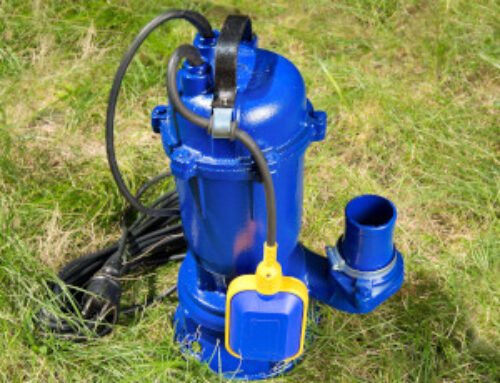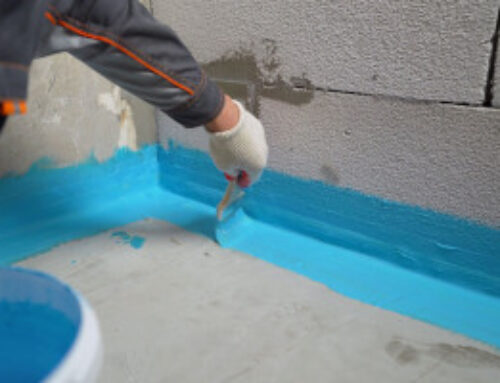Did you know that 98% of U.S. basements suffer some water damage?
Discovering water in your basement can be both frightening and overwhelming. Whether it’s a few inches or several feet of water, knowing what to do when your basement floods is crucial to protect your home, health, and financial well-being.
In our guide, you’ll learn what to do when your basement floods so you can minimize the risk to your loved ones and your home. The key is to act quickly and bring in the right pros to restore your basement.
Here’s a complete breakdown of what to do when your basement floods.
Step 1: Protect Your Family by Turning Off Electricity and Keeping Family Members and Pets Away
The most important thing on the list of what to do when your basement floods is that safety should always be your top priority. Flooded basements can pose serious hazards, especially if the water has come into contact with electrical outlets, appliances, or exposed wiring. Therefore, you need to:
- Turn off the power to the basement from your circuit breaker (if you can do so safely from a dry location)
- Keep children and pets away from the possibly contaminated water
- Wear waterproof boots and gloves if you have to enter the space
If the power is still on, don’t walk into the water. Doing so could lead to life-threatening or fatal injuries. When in doubt, call the electric company and ask them to shut off the power to your home.
Step 2: Determine the Source of the Flooding if You Can
Next, you need to figure out where the water is coming from. Again, you should only go into the basement to investigate if the power is off. Here are a few common causes of basement flooding to look for:
- Groundwater seepage from heavy rain or rising water tables
- Plumbing issues such as burst pipes or overflowing appliances
- Foundation cracks or wall seepage
- Sewer backups
Knowing where the water is coming from is half the battle in understanding what to do when your basement floods. However, if the flooding is extensive, don’t attempt to diagnose the problem yourself.
Step 3: Stop the Water When Possible
If it’s safe and feasible, take immediate steps to stop the water from entering your home. Here’s how to do it:
- Shut off your main water valve if a pipe or appliance is the source
- Use sandbags or water-activated barriers at entry points to minimize water flow
- Seal visible cracks temporarily with waterproof tape or sealant as a short-term measure
As you learn what to do when your basement floods, make sure you find where your main water shut-off valve is. You don’t want to waste time hunting for the shut-off valve in an emergency.
Step 4: Call for Professional Help to Assess and Address the Damage
Knowing what to do when your basement floods is only part of the equation. You also need to know who to call. A basement repair professional will have the skills and tools necessary to address standing water and the damage it causes.
Even if the water seems manageable, it’s critical to involve professionals. Hidden damage, structural issues, and potential contaminants require expert evaluation.
Step 5: Document the Damage for Insurance Claims
Before starting any cleanup, take lots of photos and videos of the flooded area. You can’t have too many photos. Try to capture the damage from multiple angles, including any evidence of where the water came from. This documentation is vital for insurance purposes.
Even with thorough documentation, keep in mind that your insurer may ask for additional information. Send any additional documents as quickly as possible so you can minimize delays and get the money you need to cover any repairs.
It’s also a good idea to review your insurance policy periodically to ensure it provides adequate coverage for water intrusion. Talk to your insurance agent and find out what type of protection you have against basement flooding. Professionals may also be able to help with the claims process.
Step 6: Remove Water and Start the Drying Process
Getting the water out of your basement is the first part of the repair process. A repair company can pump out the excess water. They will use wet vacs or sump pumps to get rid of standing water. Next, they will use fans and dehumidifying equipment to speed up the drying process.
If you are doing the cleanup yourself, you’ll need to rent or purchase large fans to assist with drying. Open the area up as much as possible to promote adequate airflow.
You should also get rid of any porous material that got wet, such as carpets, insulation, and even drywall. These materials can hold onto water and grow mold.
Working with a professional is the faster and more efficient approach. Professional teams have industrial-grade equipment and can thoroughly assess water damage.
Step 7: Prevent Mold Growth
According to the Federal Emergency Management Agency (FEMA), mold and mildew can start growing in as little as 24-48 hours after water intrusion. That’s why you need to act quickly to prevent mold growth. Here are a few tips for stopping mold and mildew in its tracks:
- Use antimicrobial cleaners to sanitize walls, floors, and any non-porous surfaces
- Remove and dispose of organic materials that have remained wet for too long or become saturated
- Consider a professional mold remediation service
Mold can run rampant in your home and create serious health risks for all who live there. Take mold prevention seriously and don’t hesitate to bring in the pros if you see visible growth.
Step 8: Repair Damage to the Foundation, Walls, and Windows
Once the basement is dry and clean, it’s time to address structural damage. Here are some tips for getting your basement back in top shape:
- Foundation repair experts can identify cracks or compromised structural integrity
- You may need to replace damaged drywall, flooring, and insulation
- Ensure any electrical systems and outlets affected by the flood are inspected by a licensed electrician
Don’t assume the water didn’t impact outlets or appliances. If your basement floods, you need to inspect everything before turning the power back on and using it again.
Step 9: Take Action to Prevent Future Flooding
Now that you know what to do when your basement floods, it’s time to focus on preventing future incidents. Here are a few ways to keep water out of your basement:
- Install a sump pump
- Improve drainage around your home by extending downspouts and grading the yard
- Seal foundation walls and window wells to prevent seepage
- Consider French drains or interior drain tile systems
- Schedule regular maintenance and inspections
Deterring flooding through these proactive strategies can prevent safety issues and save you the stress of mold remediation.
FAQ
Wondering What to Do When Your Basement Floods? Get Experienced Guidance From the Pros at Crossroads Foundation Repair
Now that you know what to do when your basement floods, it’s important to find a trustworthy team that can assist with all of your water repair needs.
At Crossroads Foundation Repair, we provide free evaluations and can handle all of your basement repair needs. Contact our team today!





